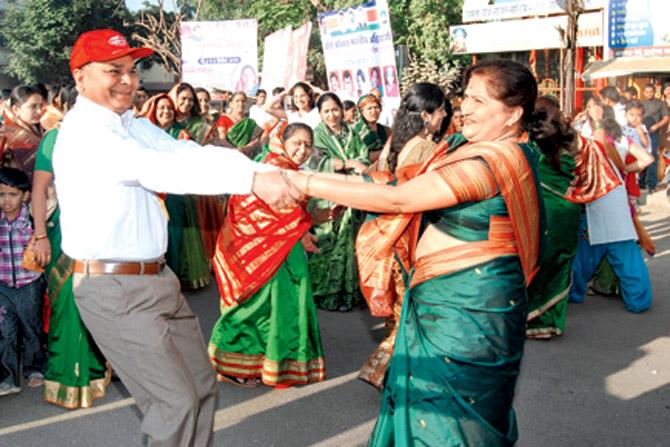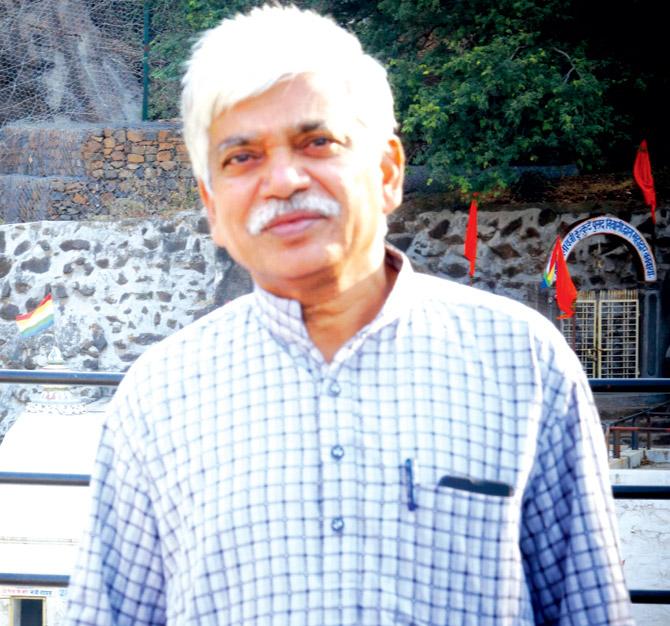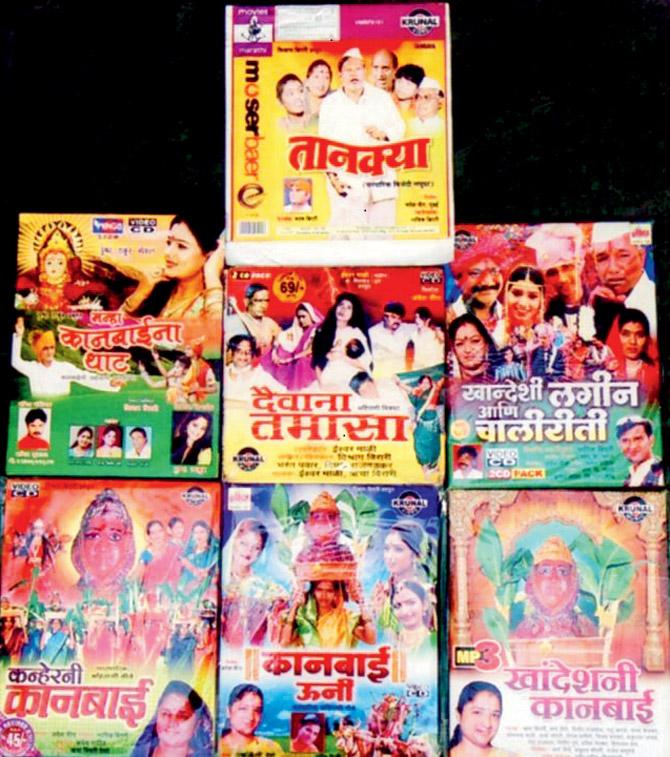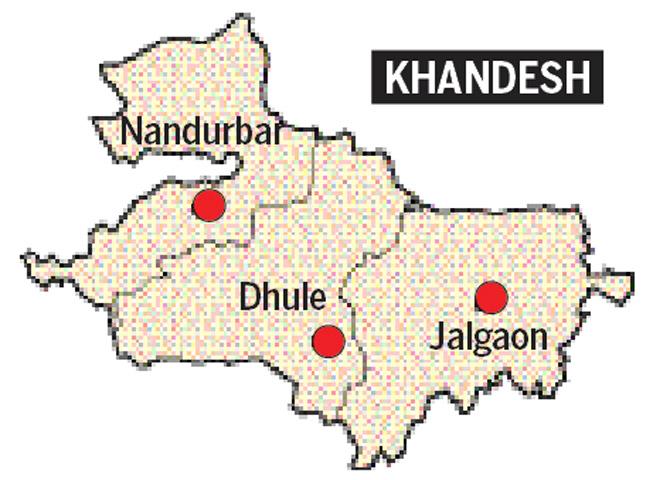Ahirani, spoken largely in Khandesh, is getting new stimulus thanks to YouTube, a bunch of dictionaries, and a lit fest on forgotten dialects


Ahirani enthusiasts do the traditional phugadi at a literary meet in Nashik
ADVERTISEMENT
 Vishram Birari, a 75-year-old Dhule-based singer-composer, has set himself two summer deadlines: recording the relatively unheard of folklore in praise of Goddess Kanbai and composing new numbers for the Saptashrungi idol. Both audio tracks, sung in the local Ahirani dialect, will be superimposed on the video footage that pays tribute to the two deities of north-western Maharashtra. Birari, along with a repertoire of singers and musicians from Dhule, has booked a Lower Parel studio for the recording. They will seek refuge in Girgaum's Madhavashram lodge, just as they have been doing for the last three decades.
Vishram Birari, a 75-year-old Dhule-based singer-composer, has set himself two summer deadlines: recording the relatively unheard of folklore in praise of Goddess Kanbai and composing new numbers for the Saptashrungi idol. Both audio tracks, sung in the local Ahirani dialect, will be superimposed on the video footage that pays tribute to the two deities of north-western Maharashtra. Birari, along with a repertoire of singers and musicians from Dhule, has booked a Lower Parel studio for the recording. They will seek refuge in Girgaum's Madhavashram lodge, just as they have been doing for the last three decades.
"Ahirani has a rich oral unrecorded reserve of songs for every occasion — weddings, religious festivals, harvests and death. No one knows who gave birth to this treasure, but whenever our troupe renders them, I can sense the earthy Khandesh connection they evoke," says the retired arts school teacher and freelance composer who cherishes his hold-all of Ahirani songs, jokes, social history of a region over the years. His family, particularly singer-daughter Richa and videographer-son Bhavik, accompany him on most tours. In the '90s, Birari was instrumental in putting over 1,000 Ahirani devotional-cultural songs on video CDs. But, as cheap, pirated CDs wounded the Ahirani music-making industry, he had to deal with upturned economics. The number of recordings decreased, but not his own compositions.

Dr Ramesh Suryawanshi
"If I find a Khandeshi entrepreneur who has some spare cash (around R2 lakh) and wants his name on the CD, I help him scout local actors and singers." He feels YouTube may give a longer and safer life to the original melodies. Small players like Birari accept an extraordinary sense of personal responsibility towards the promotion of Ahirani,a dialect spoken by around 1.5 crore people across Gujarat, Madhya Pradesh and Maharashtra (specifically the Khandesh districts of Jalgaon, Dhule, Nandurbar, and a slice of Nashik). It is the unsung pursuits of enthusiasts that sustain a language over the years, despite the lack of a native script (just as Ahirani takes recourse to Devnagari in its bid to survive) and a not-so-encouraging national climate which doesn't allow the boli bhashas to stand on their own legs.
In the spirit of honouring the rich dialects of India which have managed an indigenous life of their own, the third edition of the Gateway Litfest (to be held in Mumbai on February 25 and 26 at the NCPA) is going to have a session on script-free languages; with the torchlight on Ahirani, along with Konkani, Santhali, Bhojpuri and Khasi. "Much along the lines of last year's panel on Languages Facing Extinction, this year we want to create a buzz around regional, rather sub-regional, spoken idiom whose future rests on its speakers. Had it not been for the emotional investment of people and committed literati, these tongues wouldn't have evolved," says Mohan Kakanadan, Gateway festival director. Politician-poet Kanimozhi, filmmaker Adoor Gopalakrishnan, Jnanpith awardee Kedarnath Singh and Bengali writer Subodh Sarkar are expected to speak on trends in regional writing.

Ahirani will be represented in the festival by its fiercest advocate Dr Ramesh Suryawanshi (62). The writer of 10 books on Ahirani grammar and phraseology, he is the first to bring out its official lexicon and a pictorial Ahirani dictionary of farmers' tools-implements in Khandesh. He asserts, "Ahirani is not an inferior variant of standard Marathi; it pre-dates Marathi. Marathi's pending demand for a classical status can be fulfilled only when it draws from the 42 robust lifelines like Ahirani, Varhadi, Agri, Dhangari and Jhadi Boli." His faith in Ahirani's prowess has come out strongly in the five-odd Ahirani meets held in colourful milieus of Khandesh. The Kannad-based writer has researched extensively on the niche bolis of the Adiwasi Thakars (Aurangabad district) and the Bhils; he is currently undertaking a comparative study of Ahirani and the Gavali dialects (Melghat).
Dr Suryawanshi feels the Gateway Litfest is a great start for building pressure on the central government to include the 'spoken dialect' classification in the upcoming national census. Unlike the British era census which factored in the native tongues, post-Independent Indian census scrapped the column. "In Maharashtra, the accurate number of Ahirani speakers can't be gauged from the census because they are broadly categorised under 'Marathi speakers'. The problem is deep-rooted in a system that does not grant legitimacy to us at the level of a census. Can we then expect the government to introduce Ahirani in the curricula or to fund its original literature or encourage its translations?" For many years, finding a publisher was a difficulty.

The Ahirani dialect is spoken by 1.5 crore people across Gujarat, Madhya Pradesh and Maharashtra - the Khandesh districts of Jalgaon, Dhule, Nandurbar, and bit of Nashik
Bhojpuri writer Parichay Dass, who will be with Dr Suryawanshi at the Fest, feels writers who have taken a conscious decision to write in a dialect have to be remarkably driven. "We are its lone ambassadors and cannot afford to move to the standard mainstream choices — Hindi, in my case — even if we lose out on a larger audience. Bhojpuri has in fact, suffered a lot because of this tendency. Just imagine, if great Bhojpuri gems like Premchand and Lal Bahadur Shastri has expressed their thoughts in Bhojpuri, the language would have risen in stature."
The Union Ministry of Home Affairs currently registers demands for inclusion of 38 extra languages in the Eighth Schedule to the Indian Constitution. The inclusion compels the central government to take measures for the development of the language and conduct public service exams in the officially-recognised language. Ahirani is nowhere close to being recommended. But that doesn't stop the dialect from availing the Gateways of growth.
Sumedha Raikar-Mhatre is a culture columnist in search of the sub-text. You can reach her at sumedha.raikar@gmail.com
 Subscribe today by clicking the link and stay updated with the latest news!" Click here!
Subscribe today by clicking the link and stay updated with the latest news!" Click here!






